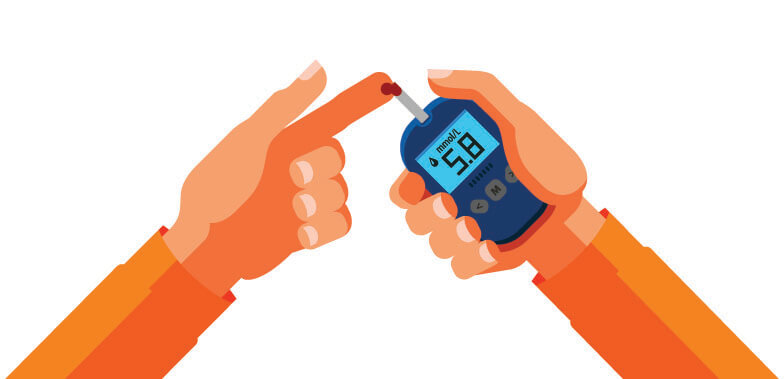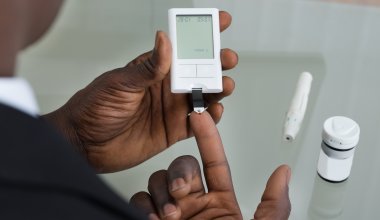In this article, we explore how to control blood sugar the natural way:
Did you know that keeping your blood sugar levels under control is important for EVERYONE, not just people living with diabetes? Maybe you’ve heard the staggering statistics about diabetes in the United States. Well, just in case you haven’t, here’s the shocking truth:
Nearly HALF of US adults either have diabetes or are in danger of developing it (1).
This means that effective blood sugar management isn’t just ‘someone else’s issue’, but rather something that we should all prioritize for better health.
It’s pretty common knowledge that we should avoid consuming too much sugar or processed foods full of refined carbohydrates that cause your blood sugar levels to spike and crash.
But here’s what you may not know:
Once your average blood sugar levels get to a point where they’re consistently outside of the normal healthy range, it’s incredibly difficult to turn the situation around. This explains the growing epidemic that is diabetes, and the pervasive impact that blood sugar management issues have on the overall health and wellbeing of our society.
But despite these challenging realities, there is some good news. There are insights from new scientific research that offer hope to improve this difficult situation. Each of us has a powerful tool inside our bodies — called the gut microbiome — that when effectively nurtured, can help us maintain or return to healthy blood sugar levels naturally (2, 3, 4).
This is exactly why we wrote this guide about the importance of healthy blood sugar management — to discuss new and exciting ways to keep yours under control.
The Diabetes Epidemic
Let’s begin by getting specific about what diabetes is. Diabetes mellitus is the formal name of the medical condition in which the body either doesn’t use insulin effectively or doesn’t make insulin (5). Insulin is a hormone produced by the pancreas that’s responsible for moving sugar from your blood to your cells, where it is used for energy.
When your body requires a higher than normal level of insulin to do its job, this is called ‘insulin resistance’ (6). When you are insulin resistant and your body can no longer secrete enough insulin, the sugar that you eat may stay in your blood, causing your blood sugar levels (aka glucose levels) to rise. When you have excess sugar in your blood over extended periods of time, diabetes can result, and that can lead to serious long-term health problems (7).
Diabetes has become a major epidemic in this country. An estimated 34.2 million Americans have diabetes, about 10.5% of the population (1).
These are quite significant numbers — and they’re growing every year. Most people living with diabetes are aware of their conditions and have been diagnosed by a doctor. Some of the typical symptoms of diabetes onset include (8, 9):
- Insatiable thirst
- Extreme hunger
- Frequent urination
- Constant fatigue
- Tingling limbs
- Blurry vision
The Impact on Public Health
The impact that diabetes can have on your health — and your life — can be very serious. People living with diabetes face elevated risks of additional health issues, including increased risk of serious complications from bacterial and viral infections (10, 11).

Given the constant stream of news surrounding the current coronavirus pandemic, you’ve likely heard that those with ‘underlying conditions’ are more susceptible to severe cases and sadly have an increased mortality risk if they do contract COVID-19. Diabetes is unfortunately near the top of the list of high risk pre-existing conditions (12).
Beyond this current pandemic, diabetes is often referred to as a “gateway disease,” given the long list of other associated comorbid medical conditions that often coincide with it.
Some of the most prevalent diseases and health issues that commonly affect people living with diabetes include:
- Hypertension (13)
- Cardiovascular disease (14)
- Obesity (15)
- Vision problems like cataracts, glaucoma, blindness, or damage to retinal blood vessels (16)
- Nerve damage (neuropathy) (17)
- Hearing damage (18)
- Kidney damage (19)
- Stroke (20)
- Depression (21)
- Loss of limbs (22)
As you can see, the complications that often coincide with diabetes can be debilitating and even life-threatening.
That’s why it’s so important for everyone to learn to properly manage blood sugar levels — not just people dealing with diabetes.
Prediabetes: The Invisible Epidemic

There’s an even larger segment of the population — beyond those diagnosed with diabetes — that suffers from elevated blood sugar levels and diminishing insulin sensitivity. A whopping 88 million adults in the U.S. have prediabetes, 35% of the US adult population! (1)
Prediabetes is defined as having blood sugar levels that are higher than normal, but not [yet] high enough to be diagnosed as having diabetes.
Although it is not technically considered a disease, perhaps it should be. Prediabetes is a very serious condition that indicates you’re on a path that will likely lead to diabetes in the future, especially without making major lifestyle changes.
So in total, around 45% of the adult population of the United States is dealing with blood sugar issues that are outside of the normal, healthy range (1)
If you are among the 1/3rd of U.S. adults that are dealing with prediabetes, it’s not too late to turn your blood sugar issues around. However, odds are that you actually don’t know whether you’re among that group.
The challenge is, for most people, prediabetes doesn’t cause glaring physical symptoms that indicate there’s a big problem. If you’re not sure of where your blood sugar levels stand, you’re not alone. Roughly 90% of people living with prediabetes have never been diagnosed and are completely unaware that they have a problem (23).
It’s like being on a train you didn’t even know you boarded! A train that’s heading for an undesirable destination unless you take action NOW.
How do you know if you should start testing your blood sugar?
- Do you feel tired after eating a high-carb meal? This can be a red flag, but it can also be difficult to tell, as we all walk around a bit tired these days. So most people aren’t going to rush to their doctor for blood work because they get a little fatigued after a meal.
- Do you frequently feel thirsty or feel the need to urinate more often? The frequent need to urinate can indicate issues too, but again, these are common things that a chronically under-hydrated population can experience.
Again, these are not necessarily things that would send someone running for a diagnosis, and most people likely wouldn’t even mention them at a typical check-up.
So, what’s the answer to all of these blood sugar and prediabetes concerns?
Keeping your blood sugar under control REGARDLESS of whether you have a diagnosed issue.
Should I Still Worry About Blood Sugar If I Don’t Have Diabetes or Prediabetes?
In a word: YES.
Practically all of us either suffer directly from blood sugar management issues, or have loved ones in our lives that deal with diabetes or prediabetes. The impact on our society both financially and emotionally is extremely high.
As described earlier, most people whose blood sugar levels are above what’s considered the “healthy range” are not aware of the situation. So it’s quite possible that your blood sugar levels may already be at or approaching prediabetic levels…and you don’t even know it.
Even if you’ve recently tested your blood sugar levels and don’t currently have a problem, it is still important to keep your blood sugar levels in check. When your blood sugar levels rise and fall dramatically for extended periods of time, even as someone who doesn’t have diabetes, this can negatively impact your health:

- When blood sugar levels spike too high too quickly, you become more likely to carry a few extra pounds that seem to creep on out of nowhere. That’s because extra sugar in your blood signals your pancreas to make more insulin, which can encourage your body to store the extra sugar as fat. Weight gain is a key risk factor for developing diabetes, which in turn can make it that much more difficult to lose weight. So keeping your blood sugar stable can help avoid this vicious cycle of frustration for many.
- When blood sugar levels crash, your brain and tissues are missing the critical glucose they need to function properly. That means dealing with issues like brain fog, an inability to focus, or feeling flat out ‘hangry,’ which are common side effects of dramatic blood sugar fluctuations. If you regularly skip meals and find yourself unable to get work done a few hours later, you know exactly what a blood sugar crash feels like (24).
The most prevalent risk factors associated with diabetes and prediabetes are generally associated with lifestyle choices, including being overweight and physically inactive (25). However, many people who live seemingly healthy lives can still be susceptible to diabetes and blood sugar issues.
There are other sometimes less-apparent factors, which can increase your risk of developing diabetes including:
- Heredity/Genetics — Minority communities are significantly more likely to be affected by diabetes for a myriad of reasons, not the least of which are long-standing systemic racial disparities and disadvantages. African Americans, Hispanic/Latinos, Asian Americans, American Indians, Alaskan Natives, Hawaiian Natives, and Pacific Islanders are all at a higher risk of developing diabetes.(26, 27)
- Age — Anyone over 45 is at increased risk. (27)
- Medical History — Anyone with heart disease, high triglycerides, low HDL cholesterol, Polycystic Ovarian Syndrome (PCOS), stroke, depression, or history of gestational diabetes is more likely to find themselves developing diabetes. (27)
Fortunately, there are plenty of ways to keep blood sugar levels under control, whether you’re dealing with diabetes or not. What’s truly exciting is that scientific developments have unearthed new groundbreaking ways to manage blood sugar naturally through your gut microbiome.
“Traditional Ways” to Keep Blood Sugar Under Control
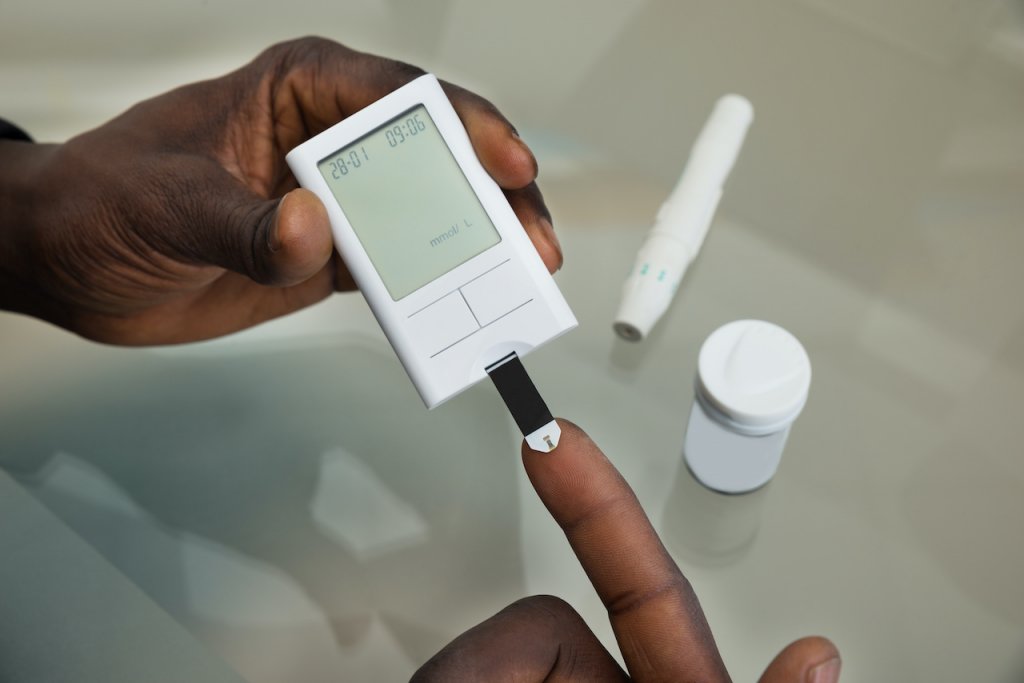
So how exactly are you supposed to keep your blood sugar levels under control and maintain ‘healthy’ insulin sensitivity in your body, whether you have diabetes, prediabetes, or otherwise?
You’ve probably heard the typical advice for people living with diabetes to get their blood sugar under control: eat less, move more (25). And it’s true that many actions that are generally good for your health are also good for keeping your blood sugar under control including:
- Regular exercise (28)
- Eating a diet rich in whole foods and vegetables (29)
- Reducing your intake of simple carbohydrates and sugar (30)
- Increasing your fiber intake (31)
- Getting plenty of sleep (32)
- Drinking lots of water (33)
- Keeping stress levels low (34)
Sounds so simple, right? This advice is sound and can be an effective way to keep blood sugar levels balanced — at least in theory.
But let’s be honest, most of the time this formula simply doesn’t play out as easily in real life.

Whether you have diabetes or not, we can all relate to struggling with our diets and having difficulty finding, choosing, and sometimes just affording enjoyable, healthy, and filling food options. This can make it extremely challenging to comply with most diet-based ‘treatment plans’ for diabetes.
If you’ve ever experienced the lightheadedness and hunger cravings brought about by a dip in your blood sugar, you know that eating less can be a real challenge — especially for people living with diabetes.
When glucose isn’t effectively making its way into your cells like it’s supposed to, it can also cause feelings of hunger, even if you’ve eaten (35). This is a significant reason why reducing food intake can sometimes feel nearly impossible for people living with diabetes.
Diabetes can cause you to feel extremely fatigued (9). It’s not exactly easy to squeeze a workout in when you can barely muster the energy to get off the couch after a long day’s work.
And let’s face it, even if you’re not suffering from fatigue, it can be quite difficult to find the time to exercise regularly when you’ve got work, commuting time, a home to take care of, and perhaps even children to look after.
For these reasons, it’s not surprising that almost all people living with diabetes rely on insulin and other medications (like metformin) to keep their blood sugar under control. The typical diabetes regimen includes regularly pricking your fingers throughout the day to track glucose levels and ensure your blood sugar doesn’t get too high or low. And then modulating insulin intake, diet, and other diabetes drugs accordingly.
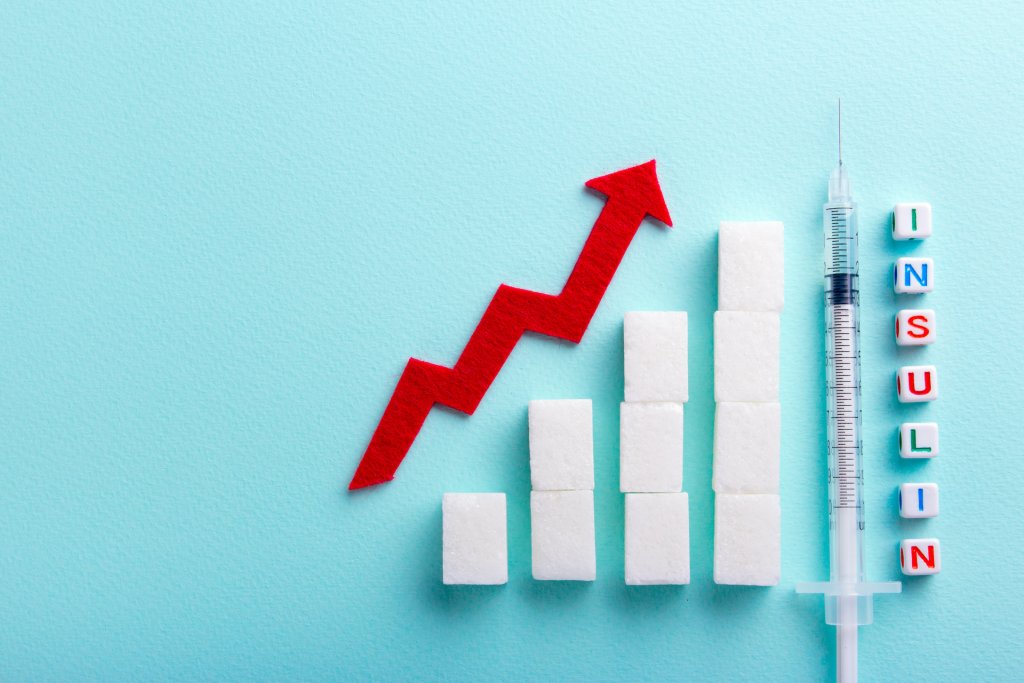
There are physical and emotional repercussions of this regimen, though. The social stigma associated with diabetes and the required treatment regimen can negatively affect one’s confidence and overall happiness, and unfortunately exert WAY too much control over your life.
Diabetes medications also often come with side effects, from uncomfortable gas and bloating to elevated risk of kidney and liver damage — not to mention the extensive healthcare costs associated with diabetes care (36).
Most everyone can relate to the challenges of finding natural and effective ways to get a health condition under control — and diabetes is no exception. The market really does lack readily available solutions that are truly sustainable and proven effective at naturally transforming the way your body regulates blood sugar.
BUT…This is changing through the science of the gut microbiome.
Gut Health = The Missing Link to Blood Sugar Control
So, how exactly can you proactively manage your blood sugar naturally, without the expense and side effects associated with therapeutics?
The answer is based on breakthrough, emerging insights from scientific research and technological developments that have accelerated over the past few years around the gut microbiome.
Scientists have discovered that by cultivating a strong, balanced gut microbiome in specific ways, we have the ability to regulate our blood sugar and naturally improve insulin sensitivity. (2, 4, 37)
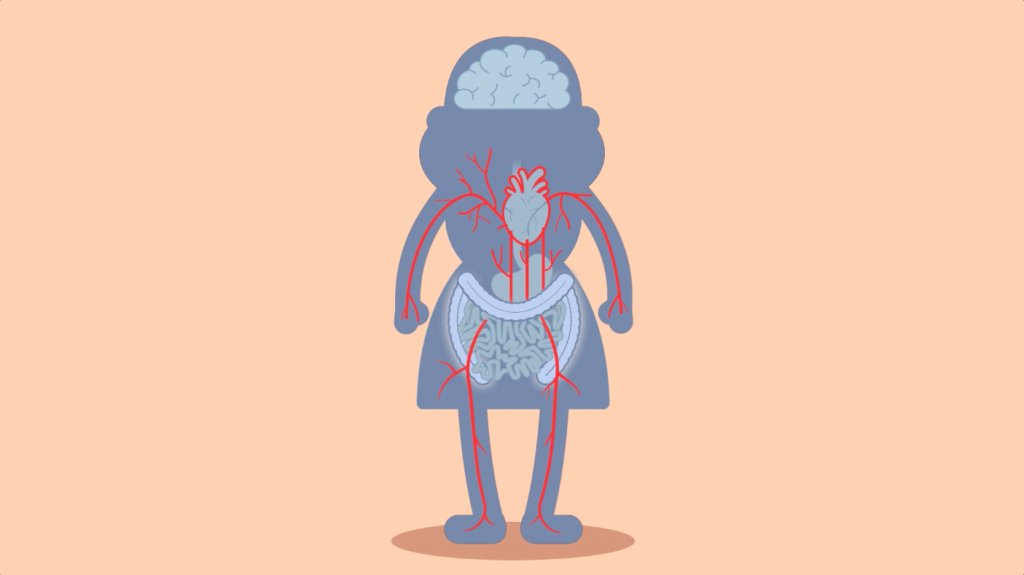
The gut microbiome is a colony of trillions of bacteria, fungi and even viruses that live in your large intestine. The gut microbiome has been widely studied and credited with being the control center for so many aspects of your health, including the function of your immune system and your mental health (4, 38, 39).
One of the most promising areas from emerging clinical studies is the gut microbiome’s role in blood sugar management and insulin sensitivity. It’s been shown through many clinical studies that by nurturing specific beneficial bacteria in your gut, that you can more effectively keep your blood sugar levels under control.
In fact, some studies actually suggest that underfeeding specific important bacterial populations in the gut is one of the primary causes of imbalanced blood sugar (2, 3, 40).
When you don’t have enough beneficial bacteria working on your behalf in your gut, that can cause your gut microbiome to be in an unhealthy, imbalanced state (often referred to as ‘dysbiosis’), which has been shown to impair your ability to maintain healthy blood sugar levels.
What’s exciting is that each of us has this powerful engine for health — our gut microbiome — inside of us. And based on the latest research, we have more insights into how to effectively harness the power of your gut microbiome to naturally transform your health in specific ways, including improving your blood sugar management.
That means, when you properly nurture your microbiome by effectively feeding the beneficial bacteria in your gut, you can help get your blood sugar under control.
How Prebiotics Like Resistant Starch Reduce Blood Sugar
So, what exactly should we feed the beneficial bacteria in our gut?
Prebiotic fiber like resistant starch
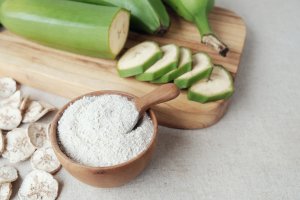
Prebiotics are foods that feed the beneficial bacteria in your gut and improve different aspects of your health (41, 42). There are various classes of prebiotics that feed different bacteria, which in turn can impact different areas of your health.
Resistant starch is a special class of prebiotic fiber that is like a superfood for your gut microbiome (43). It builds up beneficial, good bacteria in your gut and keeps them strong so they’re constantly working on your behalf to improve specific areas of your health.
Although resistant starch has been proven in more than 200 clinical studies to improve your health across a range of conditions — including gut microbiome health, digestive health, immunity, and reducing cholesterol levels (44) — the most well-studied benefits of diets high in resistant starch are improved blood sugar management and insulin sensitivity (45, 46, 47).
Near-Term Benefits — No More Spikes and Crashes
Resistant starch isn’t actually digested by you in the traditional sense. It passes undigested into your large intestine (aka your gut), where it serves as a potent food source for the microbiome.
So resistant starch doesn’t affect your Net Carb count or spike your blood sugar levels. It’s the perfect low-Net Carb tool for keeping blood sugar issues at bay.
Nutrition experts have for years recommended consuming more fiber as a way to slow down your digestion and help keep blood sugar levels in check (48). Because it’s a special type of prebiotic fiber, resistant starch is very slowly digested (or fermented) by the good bacteria in your large intestine, and glucose is released into the bloodstream slowly. This helps keep your glucose levels stable and helps prevent blood sugar spikes and crashes.
Long-Term Benefits — Actually Lowering Your Blood Sugar Levels!
As if the benefit of improved near-term blood sugar management wasn’t significant enough, it has also been shown through clinical research that resistant starch can actually help improve your body’s ability to manage blood sugar over the long-term (49, 50).
The gold standard for measuring someone’s blood sugar levels over time is called A1C, which measures your average blood sugar levels over a three-month period. A1C is typically used to determine whether someone has normal blood sugar, has prediabetes, or diabetes (51, 52).
Clinical studies have proven that by regularly incorporating more resistant starch into your diet, you can improve insulin sensitivity and actually reduce your average blood sugar levels (A1C) over time (45, 49, 50).
Resistant starch is one of the most potent weapons we have when it comes to improving your gut health and managing blood sugar naturally.
- It is an ideal food for the gut microbiome
- It is digested slowly and doesn’t spike your blood sugar
- It can help keep you full for hours — especially in combination with other sources of fiber and protein
- It can improve your long-term insulin sensitivity and reduce blood sugar levels over time
This is great news for anyone who’s known the heartbreak of watching loved ones and family members struggle with diabetes, or is trying to stay proactive in keeping blood sugar under control.
We all have the power to choose a natural, healthier path in keeping our blood sugar levels under control.
This means you can simply focus on feeding your gut the right foods to get on the path to better health and improved blood sugar management.
Regardless of whether you have diabetes, prediabetes, or are just trying to keep your glucose levels in the healthy range, you have a new powerful tool in your arsenal to keep your blood sugar stable. You have the power to regain control of your blood sugar, your personal health, and your life.

